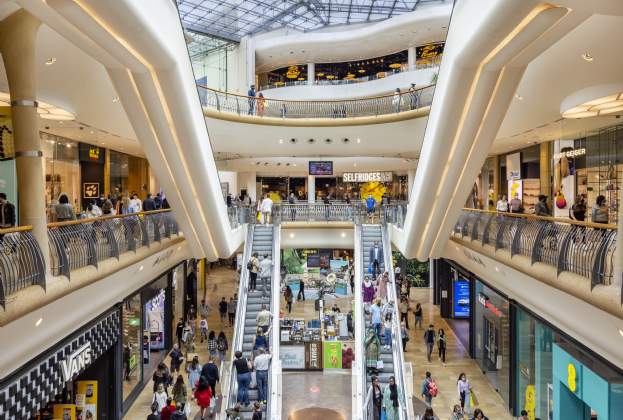Although investors continue to favour best-in-class offices, it was inevitable that pricing had to adjust to the higher interest rate environment. Across the US and Europe, prime yields have shifted outwards by around 50-100bps over the last 12 months. Core European markets such as Frankfurt and Paris, which were trading at sub-3% yields at the beginning of the year, have seen the largest decline in values (20-25%), while higher yielding US cities were better positioned to absorb the rate shock.
In Asia Pacific, the period of price discovery has been lagging behind that of the US and Europe. South Korea and Australia are exceptions, underpinned by a rising cost of local debt, but pricing was unmoved through the year in Hong Kong, Mumbai, Singapore, and Tokyo. The Dubai market is also showing some resilience, even though borrowing costs are anchored to the US. Growth dynamics in the Middle East remain positive, encouraging investors to retain capital domestically rather than diversify abroad.
A dual threat to tenant demand
We believe the current downcycle in pricing has further to run. This is partly due to the arithmetic to interest rates; in most markets, leveraged cash-on-cash returns are currently below the prevailing risk free rate of return. Tokyo stands alone as the only core market where investors can use debt to boost their returns. We’re also likely to see more focus on the occupational market, and we see downside risk to leasing activity this year.
Labour markets have been resilient to date, but employment is a lagging economic indicator, and already we are starting to see evidence of an inflection point, which is feeding through to a slowdown in leasing activity. Recession represents an opportunity for tenants to revisit their space requirements – incorporating now established hybrid working patterns more explicitly in their future plans – compounding the downturn in occupational demand. Fortunately, while hybrid working means less office space is required, the impact is mitigated by midweek peaks in occupancy and increased requirements for communal space. In Europe, we expect the demand to fall by around 10% in the long term.
Tenant quality will be a further differentiating factor in a recession; corporate distress was notably absent from the 2020 recession, but business insolvencies are beginning to rise again, and corporate bond spreads are widening on increased counterparty risk. For investors, this means a greater understanding of the quality of tenants and their forwardlooking prospects, underpinned by balance sheet strength and resilient cash flow. This will be important for lenders too, who will be underwriting loans based on much lower interest coverage ratios than the market has become accustomed to in recent years.
The risk is most acute in the US. Tech firms have dominated office leasing activity in recent years, but they are now returning swathes of sublease space to the market in hubs such as San Francisco. Across the country, around 174mn sqm of sublease space was on the market at the end of last year, a record high. Asking rents have yet to fall, but landlord concessions are at peak levels in many cities. Lease lengths have also shortened significantly in recent years; the share of very short leases (one year or less) was around one-third in 2021, up from 15% in 2019, which will speed up any down adjustment in occupation markets.9 Sentiment is weak on offices as a result; listed REITs were trading at a near 40% discount to NAV at the end of January, 2023, compared with an average of 12% across all sectors. European markets are also leveraged to the tech sector, as well as financial services, and landlords are also having to raise concessions to attract new tenants to maintain rents. But hybrid working is less entrenched than in the US, and vacancy rates are much lower, particularly in core markets such as Paris and Berlin. In Asia Pacific, office utilisation has broadly returned to pre-pandemic levels across many cities, and the outlook for economic growth is more resilient. China’s reopening may support a recovery in Beijing and Shanghai, which looked vulnerable to rising vacancy rates before authorities disbanded zero-Covid rules (net absorption in Beijing hit a decade low in 2022), as well as Hong Kong, where the Mainland increasingly dominates both investment and leasing activity.
.jpg)
.jpg)
.jpg)

.jpg)
.jpg)
.jpg)